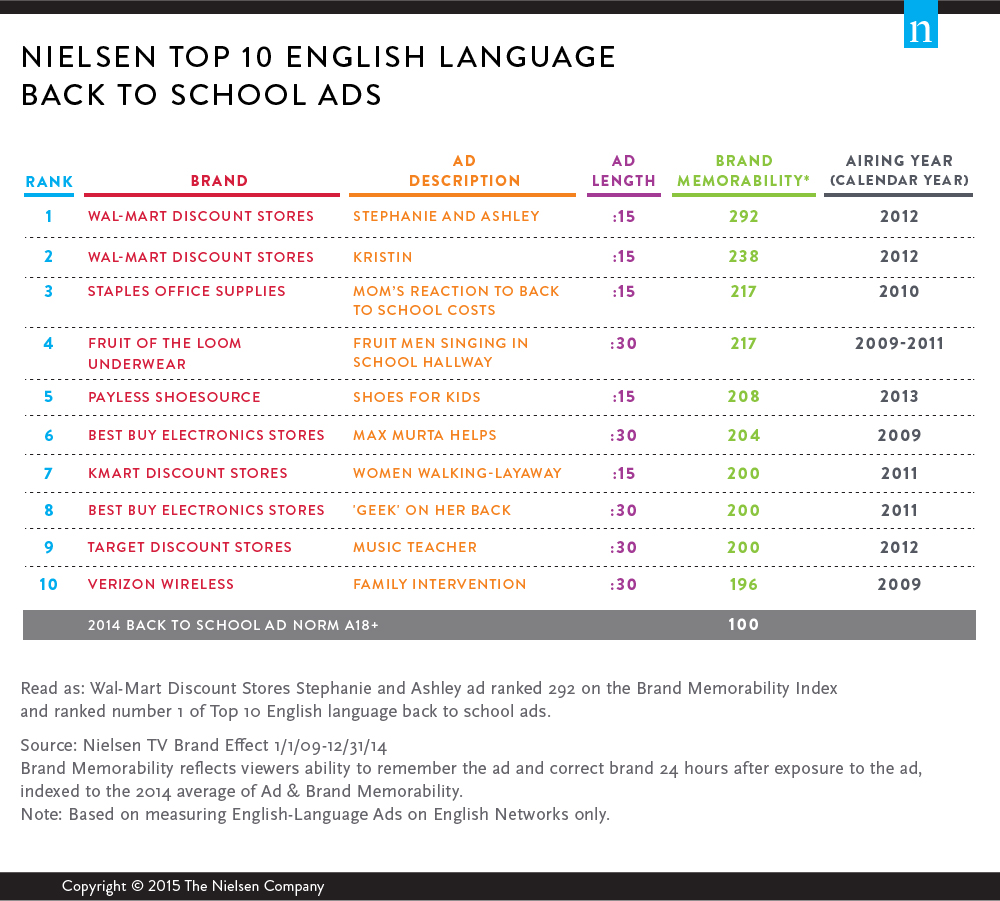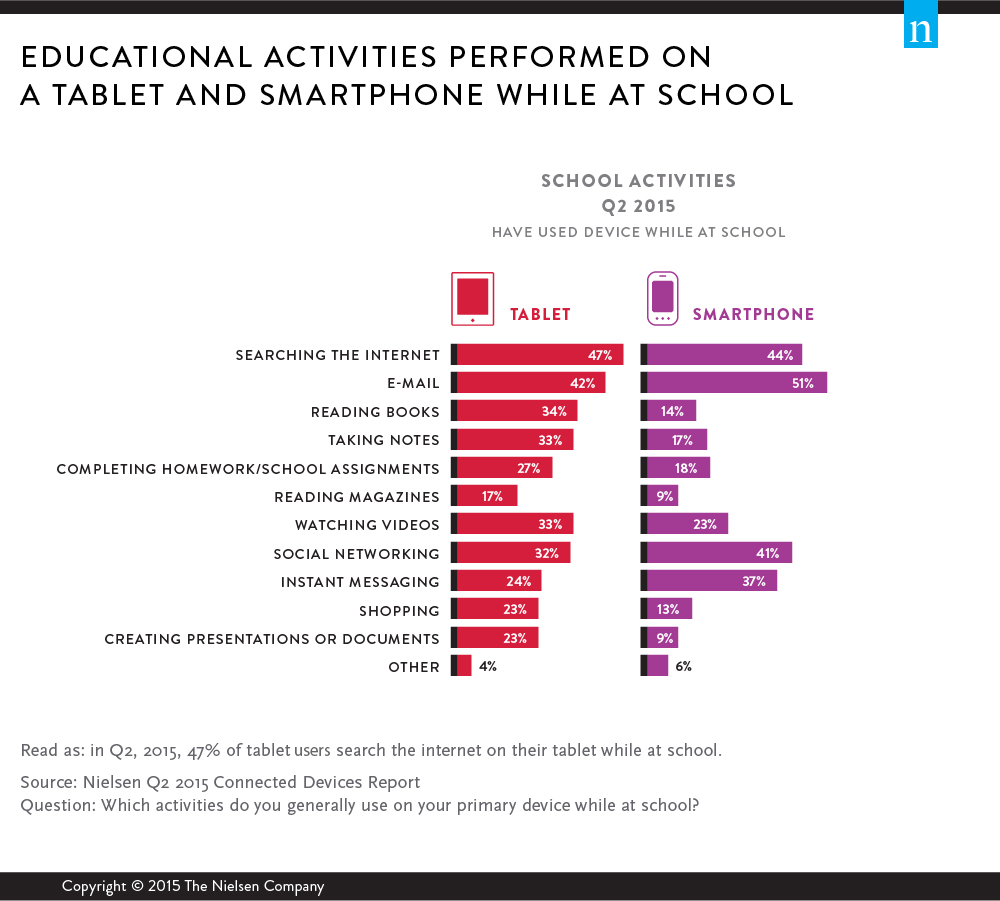It’s an annual tradition. As summer winds down and families enjoy their last days of vacation, marketers, advertisers and retailers are already hard at work devising and implementing strategies to showcase the latest and greatest back-to-school wares.
And these days, students seem to have more choices than ever—be it for backpacks, footwear or tech. So that means advertisers have their own homework cut out for them if they want their ads to stand out and generate scholarly returns.
So what puts an ad at the front of the school bus? A recent Nielsen study looked at the top 10 English-language back to school ads ranked on brand memorability over the past six years. With all the school supplies kids use during the school year, it shouldn’t be a surprise that many of the ads contained cost-saving themes. For instance, Walmart highlighted its cost-saving guarantee in both of its commercials that made the top 10, each of which featured a mother and daughter shopping for back-to-school supplies. Target and Fruit of the Loom, while vastly different businesses, touted deals that use song and dance in their creative: Fruit of the Loom featured singing apples and grapes in a school hallway, and Target featured a music teacher singing along with students playing instruments in a colorful music video like ad.
Other big box stores, including Best Buy, Staples and Kmart, also made the top 10. They featured content about cost savings for a variety of products including apparel, school supplies and electronics. But back-to-school season wouldn’t be complete without a new pair of kicks to go with the backpack, calculator and jeans, and a Payless’ shoes for kids’ ad also made the top 10.

But today’s kids are shopping for more than just pencils, notebooks and new shoes. To say that technology plays a large part in the daily routine of kids might be an understatement. According to Nielsen’s Second-Quarter 2015 Connected Devices Report, email and searching the Internet are the top two activities among smartphone and tablet users. And at school, 51% of smartphone users and 42% of tablet users say they use their device for email, while 44% of smartphone and 47% of tablet users say they search the Internet. Social networking was the third highest activity among smartphone users at school (41%), while reading books was the third highest activity (33%) among tablet users. Taking notes and watching videos also ranked high among tablet users (33% for both), compared with smartphone users, 17% and 23% respectively.
Apps and tablets are also playing a larger part in student’s education. Forty-two percent of children under the age of 17 use educational apps that are recommended by teachers for classroom learning. Twenty-one percent of children use a tablet in class in conjunction with the teacher’s curriculum/presentations, and 16% use apps created by teachers to make it easier for students to be engaged with the classroom curriculum, assignments and grades.

With the rise of tech in the classroom, marketers are actively pursued students and parents who want to stay connected while away at school, so it’s no surprise that a humorous Verizon Wireless ad came in at number 10. The ad showed parents addicted to using social media on their smartphone, with their kids scheduling an intervention!
Whether back-to-school shoppers are looking for the latest tech gadget or wooden pencils, marketers are presented with unique opportunities to reach this segment.
Methodology
Nielsen TV Brand Effect employs a nationally representative online panel of U.S. TV viewers who have watched programs within the past 24 hours. These panelists answer survey questions about the programs they watched and the commercials they were exposed to. Since the panelists respond based on what they watched in a natural environment, the results reflect real-life reaction to and memory of television commercials. Nielsen logs and issues surveys for all national commercials within its coverage dayparts and networks. This list was limited to adults 18+ and to ads launched after Jan. 1, 2009, until Dec. 31, 2014, measuring English-language ads on English networks only.
The mobile insights came from Nielsen’s Mobile Connected Device Report for second-quarter 2015. Insights from that report were derived from an English-language survey, gathered from a general population sample of those aged 13+ and with 8,726 respondents who own a tablet, smartphone or streaming-capable device.



